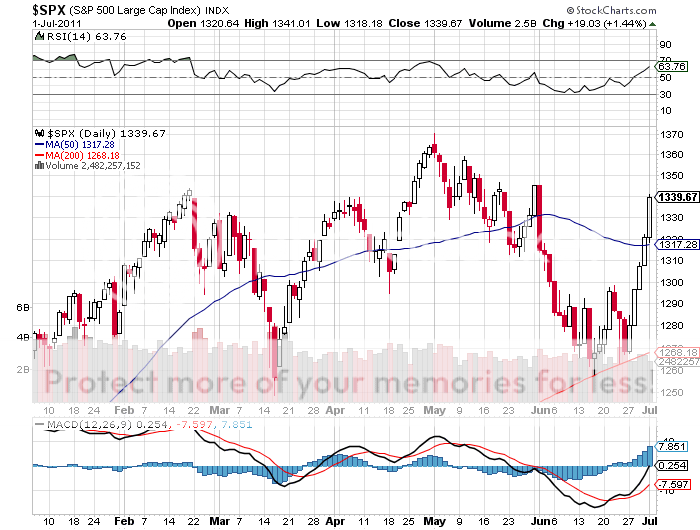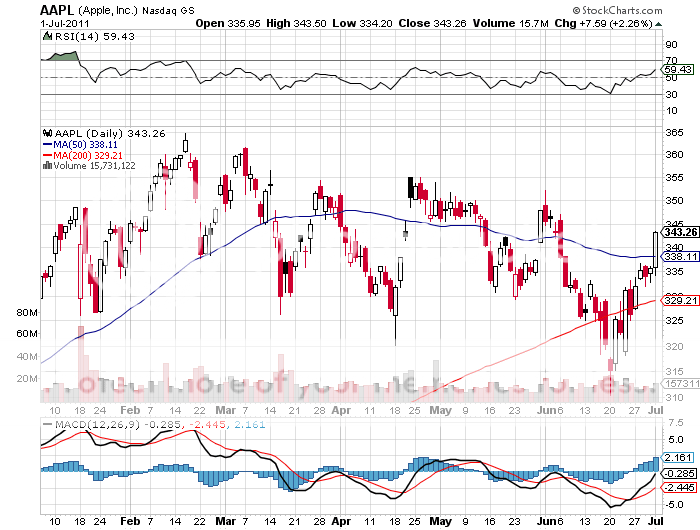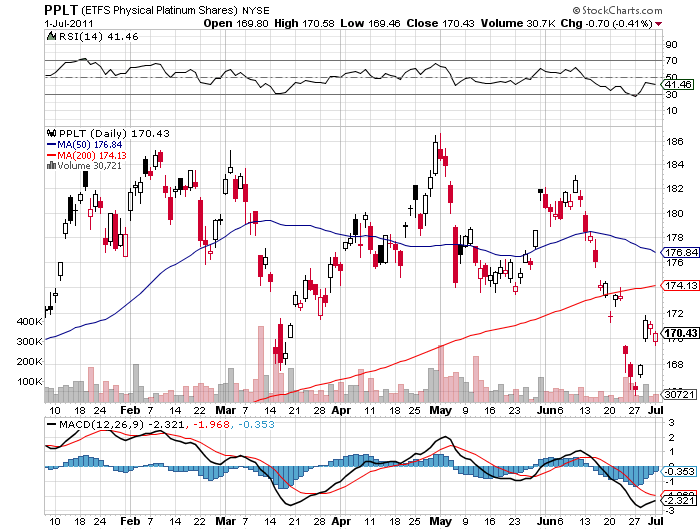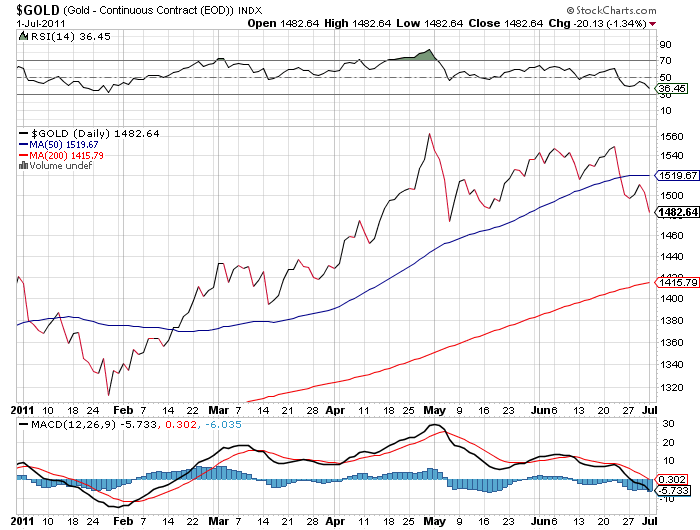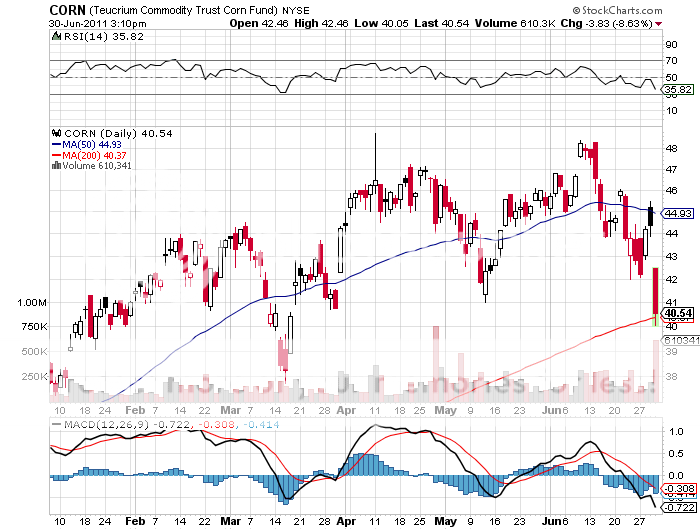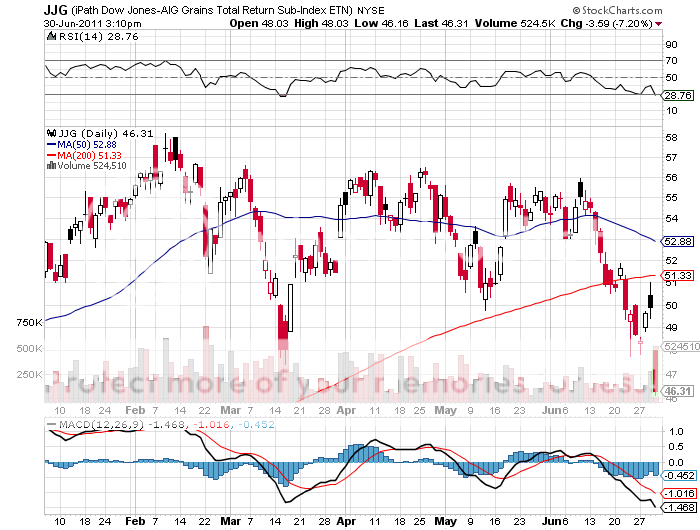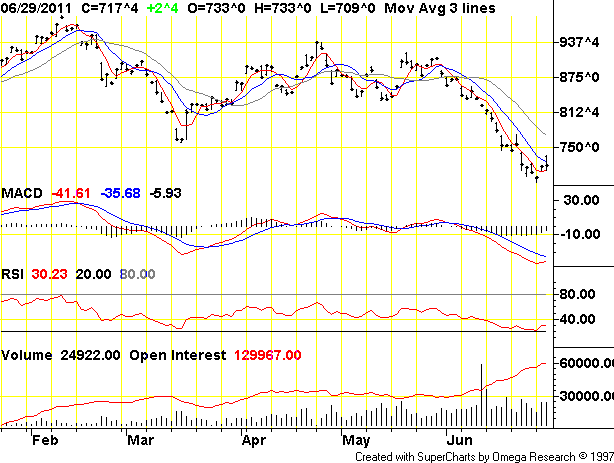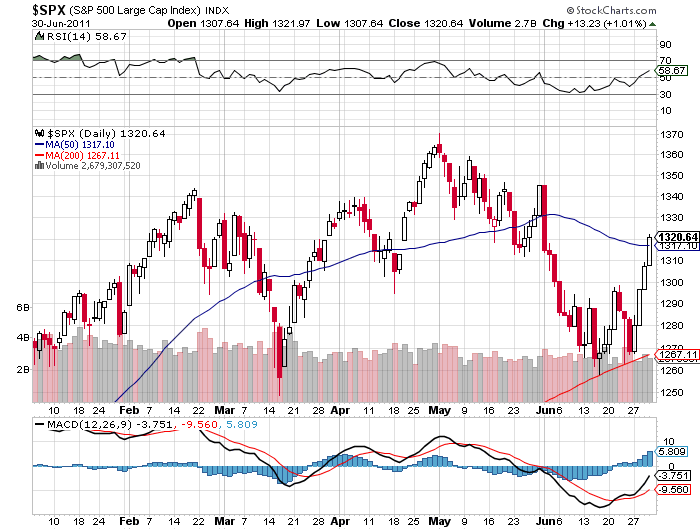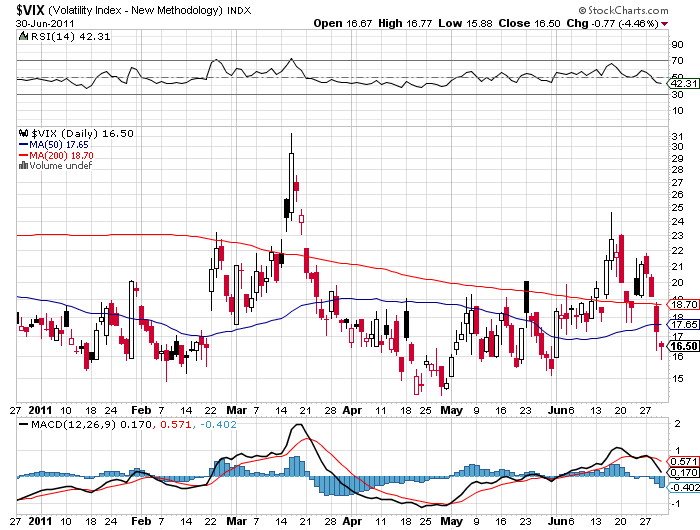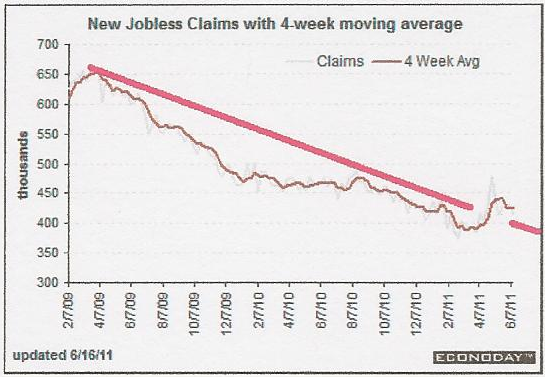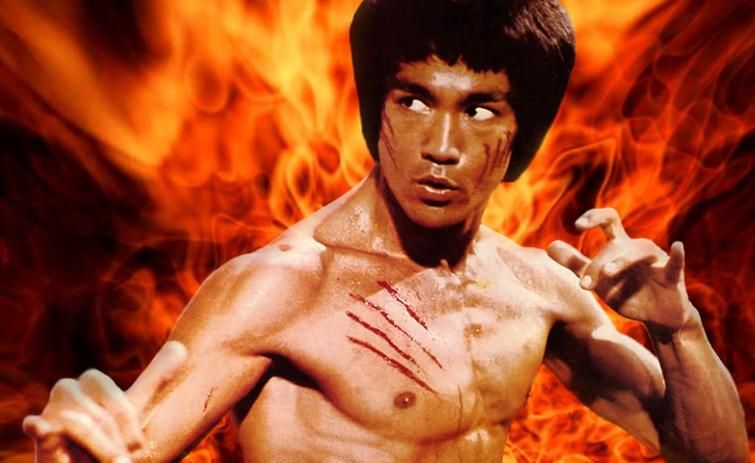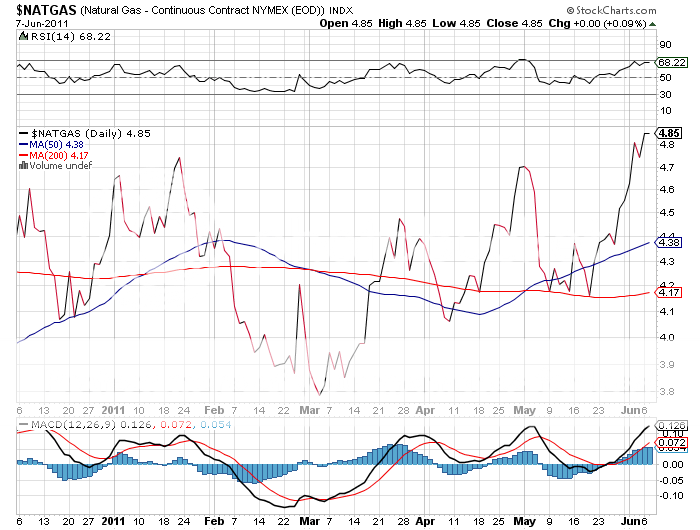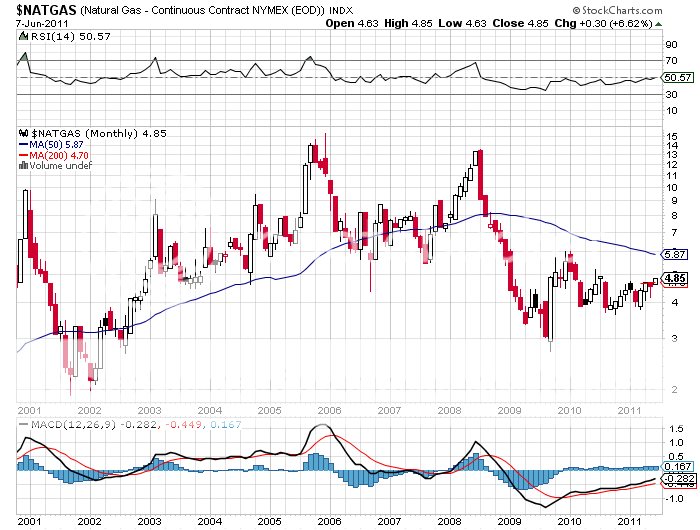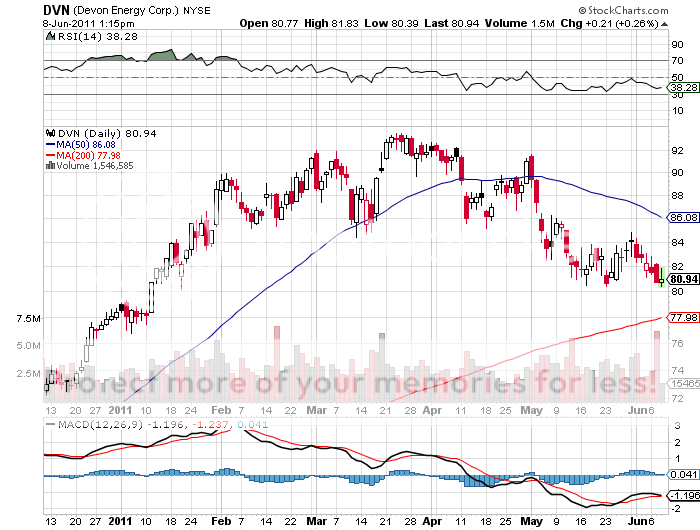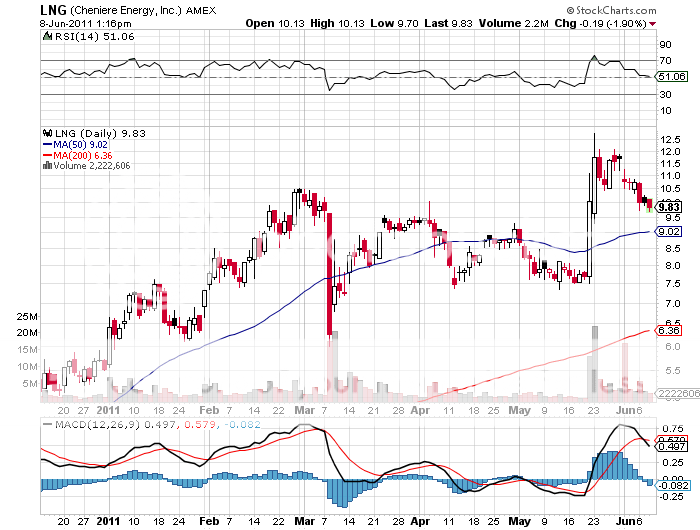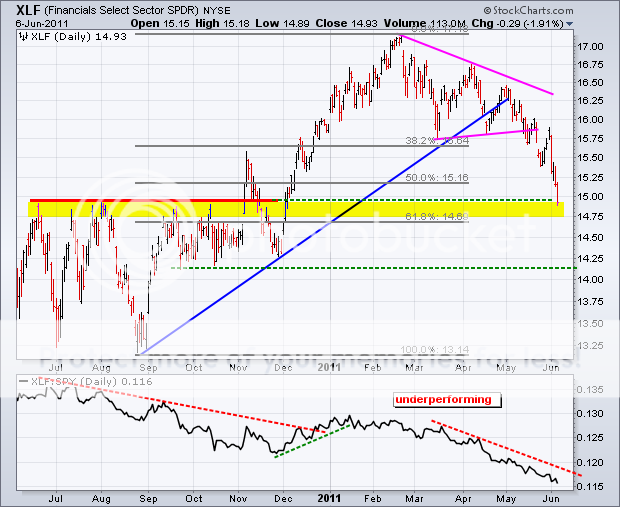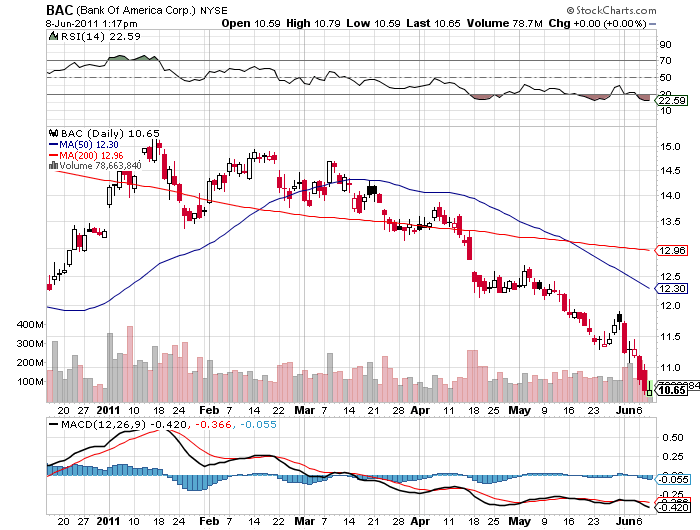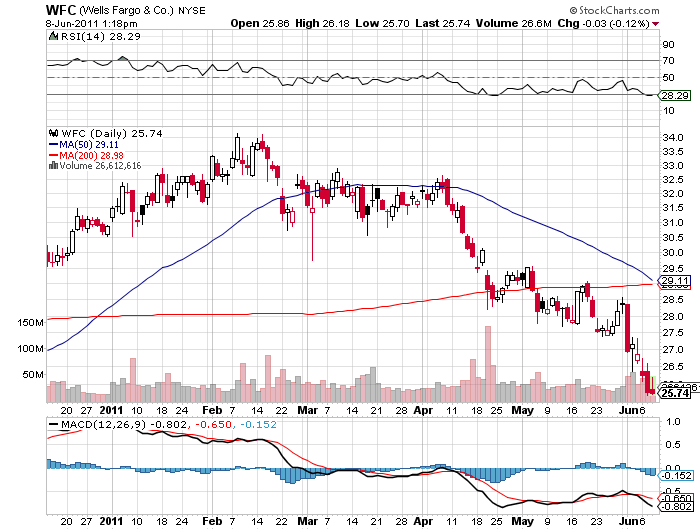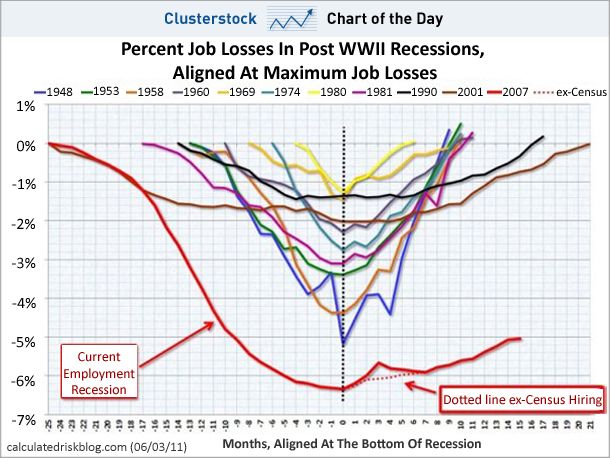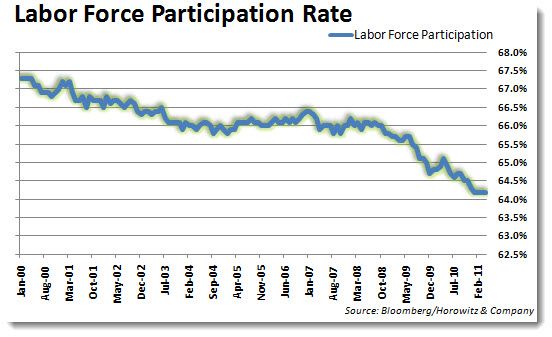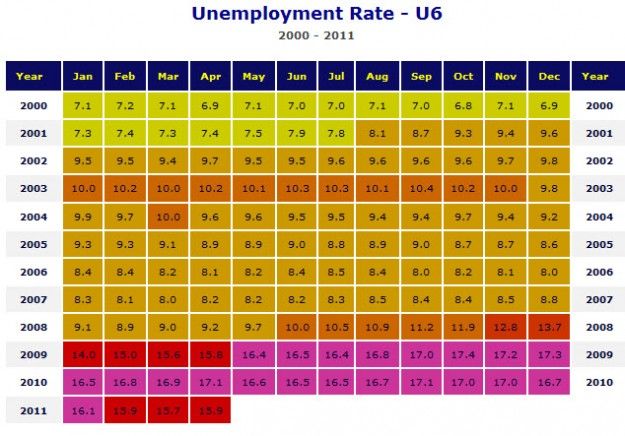Featured Trades: (THE STOCK MELT UP THAT WAS), (SPX)
2) The Stock Melt Up That Was. The first half of 2011 went out with a bang last week. The S&P 500 delivered an awesome 72 point run, its best performance in two years. After threatening the 200 day moving average three times, the index predictably bounced hard. What really left traders with jaws dropped was the way the (SPX) blew through the 25 day moving average at 1,317 after only an hour of indecision.
It was a brutal week for hedge funds. I caught several managers on the phone after the close, on their way to the Hamptons in their limos or to Florida on Netjets, and managed to get some color. As the street was positioned for Armageddon with the demise of QE2, everyone was caught short, so at least 50% of the move was short covering. Another 25% came from month end, quarter end, and half end window dressing. The final 25% came from underweight mutual funds looking to modestly top up holdings. Everyone rushed to buy their favorites, which is why technology was the big winner.
The vote by the Greek Parliament provided the starting gun and delivered the weak dollar that added the fat to the fire. Modestly improving minor data releases that are usually ignored, like the Chicago purchasing managers index and the ISM, provided the justification to gun the market further. What was truly amazing was to see the love fest spill over into July 1 when new quarter profit taking was expected. Nothing substantial on the economic front came into play. Call it a 'faith based' rally.
Notice that the buying was entirely professional, on low volume with the retail investor completely absent. This reflects the sad state of affairs that the American stock markets have fallen into. After the proprietary desks, hedge funds, and high frequency traders have had their fill, there is nothing left for anyone else. Although the (SPX) is nominally up 7% during the first six months of 2011, the entire index performance came only during the last three days of the half. After you take out management fees, operating and marketing expenses, and other assorted rip offs, I would bet that the vast majority of mutual funds are either up low single digits, or are losing money this year.
What in effect has happened is that in a market that is going nowhere, we have flipped from the bid to the offered side. The spread works out to be about 100 S&P 500 points. You would be mad to chase the long side here. I think the next stock trade that is setting up will be from the short side, sometime after the best of the Q2 earnings reports are out in mid-July.
-
-
This Was the 'BUY' Signal

